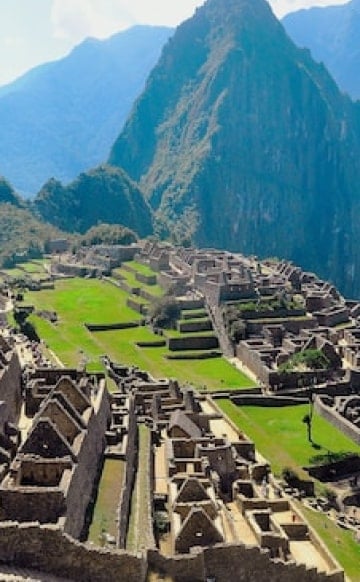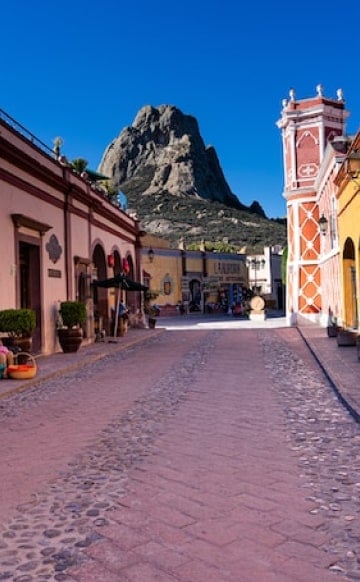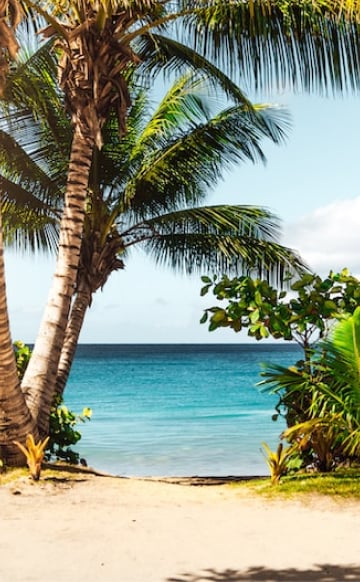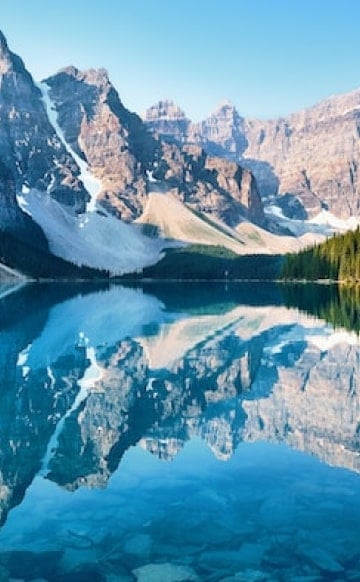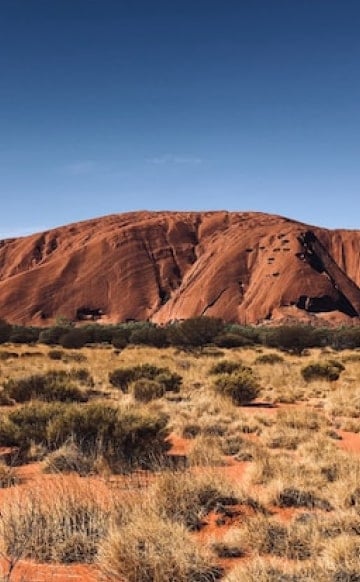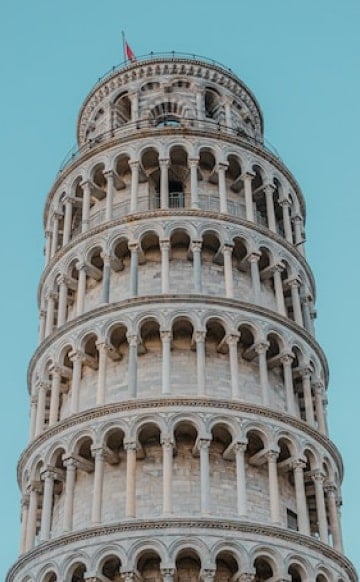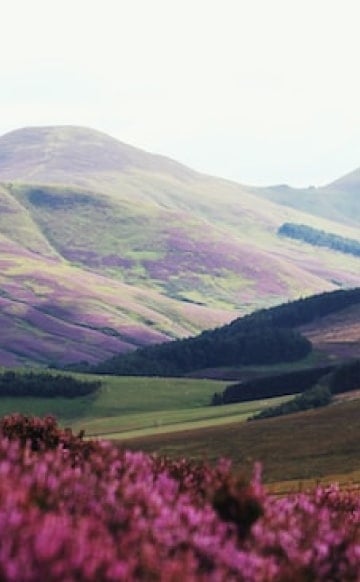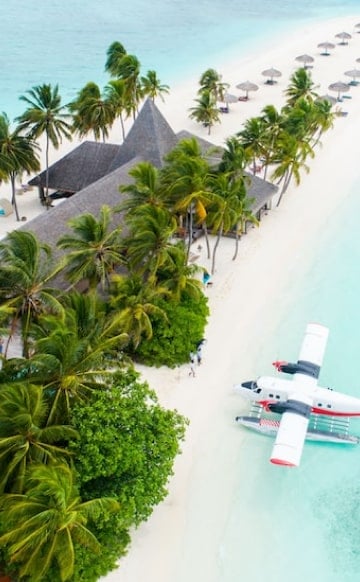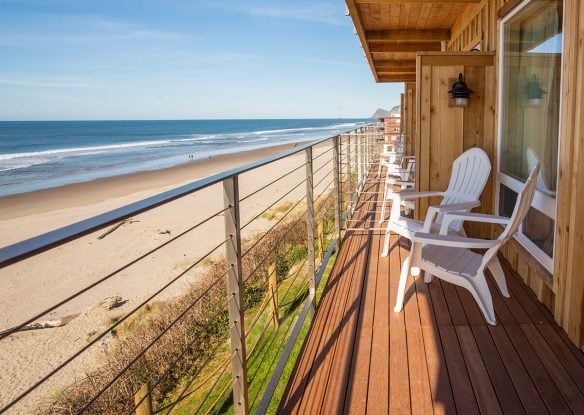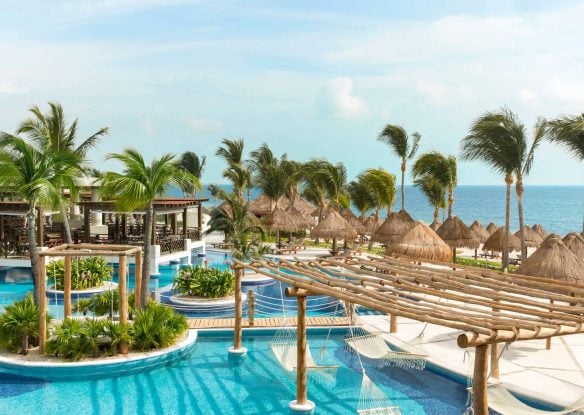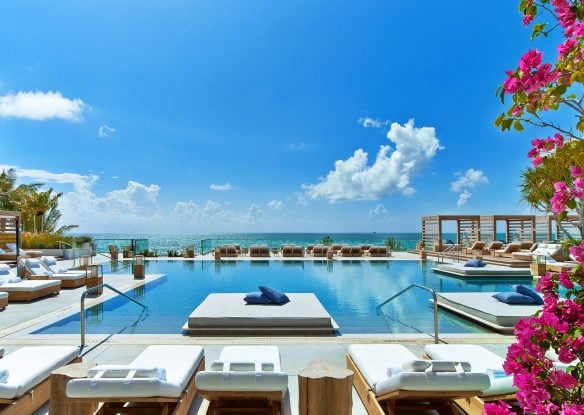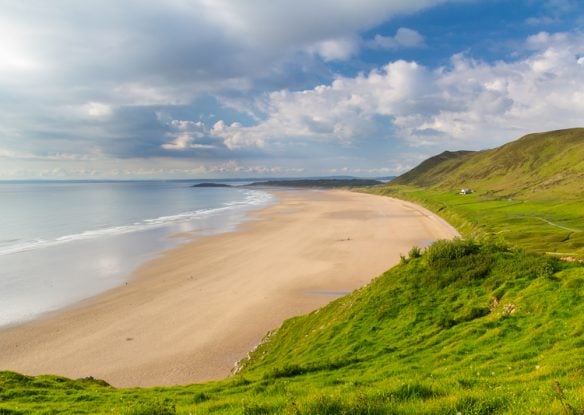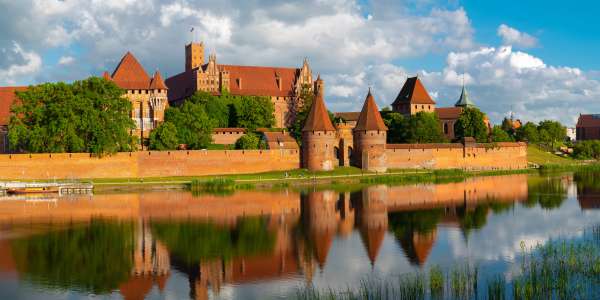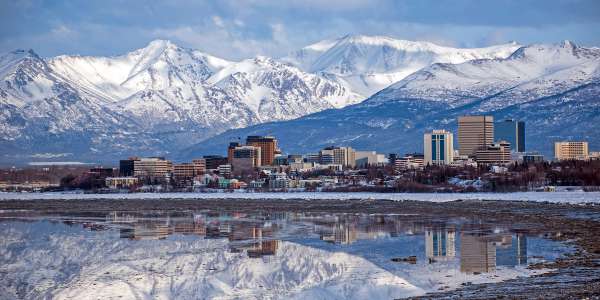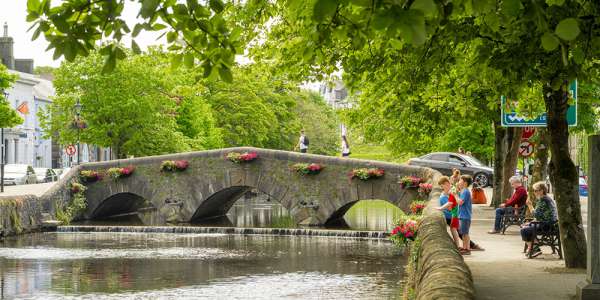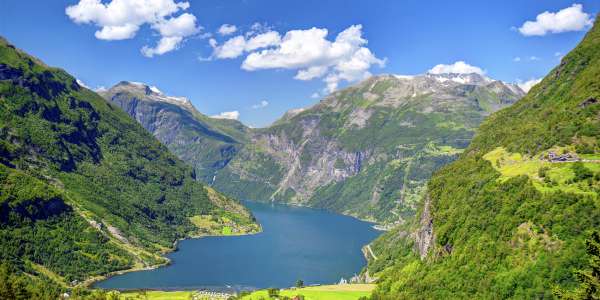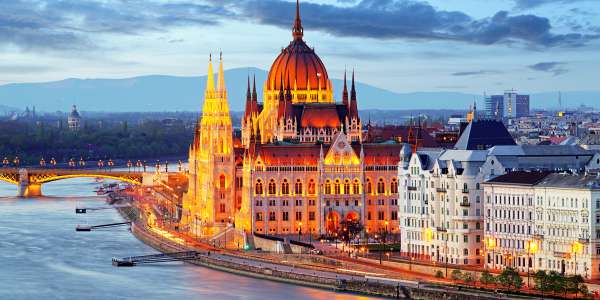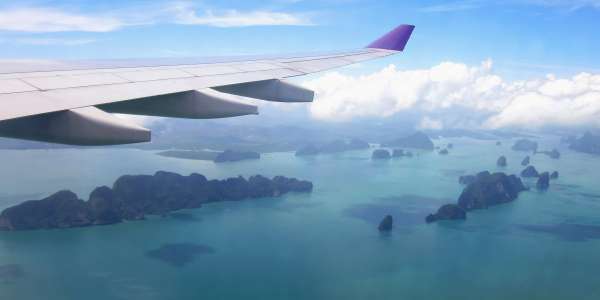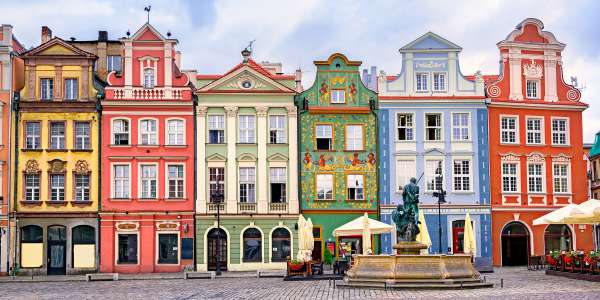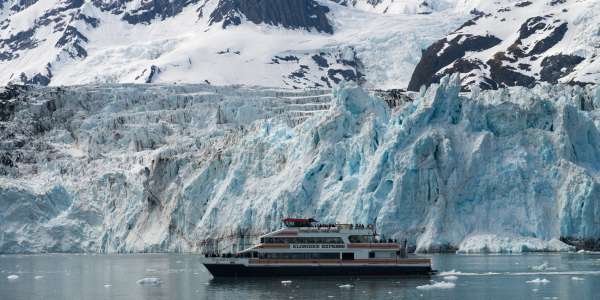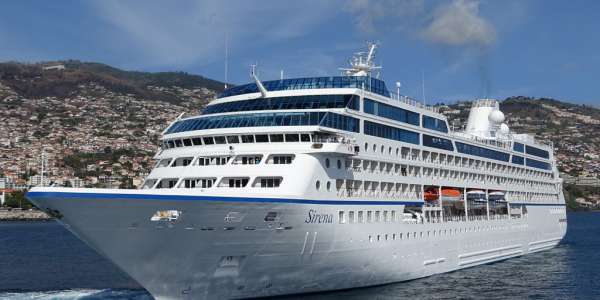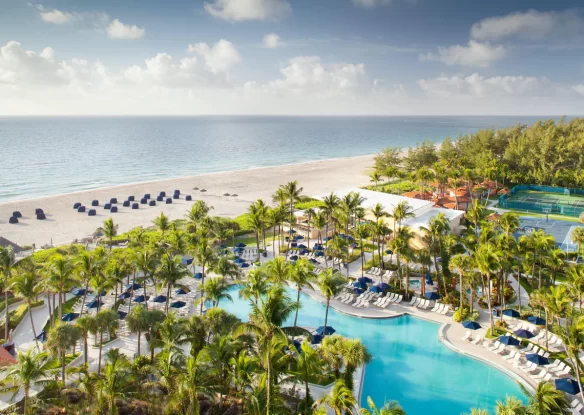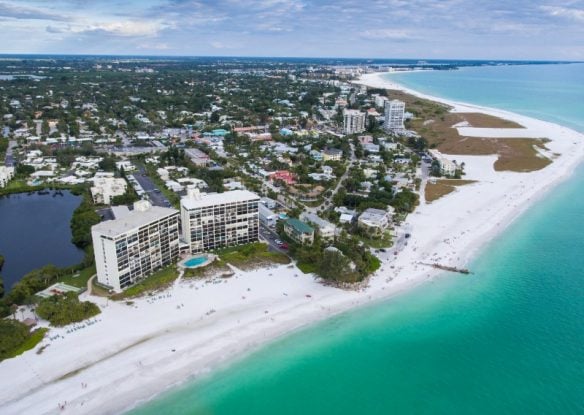Seeing whales in the wild, in their natural environment, is an infinitely better way to view them than in captivity. If you’d like to enjoy this unforgettable opportunity, these top destinations around the world offer the best chance.

Maui, Hawaii
Maui is one of Hawaii’s most popular destinations, with idyllic year-round temperatures, gorgeous beaches, lush rainforests and some of the most scenic drives in the world. But it’s also renowned for humpback whales. In the winter, these massive creatures that range between 40 and 52-feet long, grace the Hawaiian waters, and particularly Maui’s shorelines, for their annual winter migration through the Pacific between about mid-December and late April. There is numerous whale-watching excursions available, though sometimes you can just look out at the sea and see one breaching offshore. Take a dip underwater, and you might even hear a whale song, as their haunting melodies can be heard from up to 12 miles away. Thanks to conservation efforts, the whale population has been steadily increasing over the last half-century. In 1966, it was estimated to be 1,400, and today, the number has grown to some 21,000, with half believed to pass through the waters that surround the Hawaiian Islands.

Vancouver Island, British Columbia, Canada
One of the best places in the world to see orcas is Johnstone Strait, located between northern Vancouver Island and mainland Canada. The area is home to about 250 resident orcas, and there are a number of ways that you can see them. There is nothing like seeing these beautiful animals just a few yards away from a kayak. You’ll paddle alongside them in their natural habitat during the day, and enjoy fresh salmon your guide has plucked from the waters before retiring to a cozy beachside tent at night.

San Juan Island, Washington
Orcas can also be found just off the western coast of the U.S. in Washington State, thanks to the abundant supply of Chinook salmon. They are known as the Southern Resident killer whales, made up of pods J, K and L, and they can frequently be seen in the waters off San Juan Island’s west shores from late May through early October. If you don’t want to head out onto the water in a boat or a kayak, one of the best places to see them from shore in the world is at Lime Kiln Point State Park, AKA Whale Watch Park, where they come in especially close to land. For a guaranteed sighting, you’ll find multiple whale-watching outfitters who will get you out into the water – a smaller, powerboat is your best bet. Kayak tours can be productive too and offer a more intimate experience. In addition to orcas, you’ll likely see a wealth of other wildlife, including bald eagles, dolphins, minke whales, seals and otters.

Churchill, Manitoba, Canada
Beluga whales are famously known as the white whales who are always smiling – at least it looks like they are. The friendly, sociable creatures live in the sub-Arctic and Arctic waters above the 50th parallel, and the Hudson Bay coastline in Northern Manitoba, Canada is home to the largest population of them in the world. More than 57,000 beluga whales congregate in the region in the summer, inhabiting the warmer waters of the Churchill River after the ice breaks. The playful “sea canaries,” called as such for their unique high-pitched whistles, have few natural predators, keeping populations relatively stable. There are a number of tours available, including zodiac and large passenger boat excursions, where you can watch for the belugas and even listen in on their conversations using hydrophones. The more adventurous can even head out into or on the water by kayaking or snorkeling with the whales.

The Azores, Portugal
There are many whale species that choose the Azores, located almost halfway between Europe and America, as their permanent home or as part of their migration route, including blue whales, sperm whales, Sei whales, humpbacks, baleen whales and fin whales. But perhaps the most exciting is the blue whale – the largest animal on the planet, weighing up to 200 tons and reaching as long as nearly 100 feet. The Azores offers plenty of outdoor adventures to choose from, but it’s one of the best places in the world to catch a glimpse of these whales, with the chances for seeing at least one type of dolphin or whale here is reportedly 98 percent. In February, blue whales are sighted on a regular basis and their presence peaks in March. The best way to spot them is by boat – guided tours are available through a number of outfitters, with most departing from Ponta Delgado on the island of Sao Miguel.

Strait of Gibraltar, Spain
In the Strait of Gibraltar, the narrow strait the separates Morocco in Africa from Gibraltar and Peninsular Spain in Europe, you’ll not only have a nearly 100 percent chance of seeing dolphins but a good chance for spotting a variety of cetaceans, particularly pilot whales, who are known to be some of the most social whales around. An abundant supply of food means that this area is a year-round home for them. It’s also a privileged place to see a species hardly visible in the rest of Spain: orcas. From early spring, and particularly in the summer months, groups of the whales arrive, often very close to the port of Tarifa, in search of the Bluefin tuna. The only downside in this region is that strong winds can sometimes prevent whale watching boats from going out, which means you may want to allow several days in your itinerary to ensure that you’ll be able to go.

Orkney and Shetland Islands, Scotland
Not only does Scotland offer breathtaking scenery and magnificent ancient castles, but its west coast is one of the best places in the world for whale watching. In fact, a third of the North Atlantic’s whale population migrates to this region every year, and some species live here year-round. Minke whales are most commonly sighted, but humpback, fin, orca, pilot and sperm whales can all be seen from time to time. Ninety percent of orca sightings in the U.K. are off the Northern Isles of Orkney and Shetland, with peak sightings from around late May through early September. Watch the western waters, off the cliffs and shores of Orkney’s western islands, and there’s a very good chance you’ll spot a whale or two – Cantick Head and the Old Man of Hoy are favorite places for locals that watch the waters for whales.

Glacier Bay National Park, Alaska
Alaska in general is a great place for whale watching of all types, with many species of cetaceans inhabiting or migrating through Alaskan waters, include orcas, beluga and humpbacks. Glacier Bay National Park in particular is a prime location to watch humpback whales who are known to construct massive circular fishing nets with bubbles to catch the vast shoals of herring, launching themselves high into their air with their mouths open wide. Seeing this spectacle is truly a once-in-a-lifetime experience. The true giants of these waters expel air at more than 300 miles-per-hour, creating a cloudy column of vaporized air that can be seen for miles. They’re also surprisingly acrobatic for their size, known for stunning viewers with their explosive, full-body breaching and pectoral fin slapping. Come between June and September (August is the peak time), and you’re practically guaranteed a sighting with multiple boat tours available. You’ll also have a chance to see brown bears and bald eagles.

Hervey Bay, Australia
Hervey Bay, a coastal city in southern Queensland, is a haven for humpbacks between August and November. The waters of the Great Sandy Marine Park, which is protected by Fraser Island, is a preferred place to rest – especially with their young. They feed only in the summer and then migrate to new climates for the winter months, where they mate and give birth while living off their fat reserves. Whale sightings are guaranteed here from mid-July to the end of October. This is when some 7,000 humpback whales and their new calves enjoy resting and playing in the safe, calm waters of the bay. The mothers use this time to teach their newborns survival skills before heading back to Antarctic waters.

Dominica
Dominica, known as the “Nature Island,” isn’t a place to visit if you want to spend your days lying on the sand. It’s famous for its waterfalls and hot springs pools, as well as its resident population of sperm whales that live just off the coast and are often visible from shore. The sheer underwater drop-offs around Dominica create deep, sheltered bays along the western coastline, making the perfect haven for the sperm whale to breed and calve. In fact, this is the only country where these whales reside all year long, though sightings are most frequent between November and March. You can take a short boat ride out to see them, and several outfitters even offer the chance to go diving or snorkeling with these amazing animals.

Antarctic Peninsula
The Antarctic Peninsula makes up the most diverse and productive Antarctic marine ecosystem, with the southern summer large ice-free areas providing breeding grounds for very large numbers of seabirds and seals. Humpback whales, southern right whales, orcas and minke whales all gather here in significant numbers during summer in the southern hemisphere. Seeing them among the ice and some of the most dramatic scenery on the planet as a backdrop is truly unforgettable. February and March are the best months of the year to go.

Kaikoura, New Zealand
Kaikoura, New Zealand is another one of only a few places in the world where sperm whales can be seen year-round. Off its coastline is a marine environment so rich in nutrients that it attracts these incredibly magnificent creatures that can weigh more than 50 tons and grow to up to 65 feet in length. They congregate here because the over mile-deep Kaikoura canyon runs right up against the coast, which creates a rare system of sea currents that contain an exceptionally rich marine food chain. Here, you’ll also have the opportunity to spot dusky dolphins, the rare and endangered hectors dolphin and New Zealand fur seals.

Baja California, Mexico
Baja may be the place to go if you’re looking for variety. The region hosts singing humpbacks off its southern tip, friendly grey whales in the breeding lagoons on the Pacific coast, and in the Sea of Cortez, there is everything from Bryde’s whales to blue whales. Three major lagoons in Baja California are the primary destination of the southbound gray whales: Scammon’s Lagoon, San Ignacio Lagoon, and Magdalena Bay. The government strictly regulates access to these lagoons to ensure that any human activities do not affect the whales while they are in the quiet, protected lagoons that the gray whale has used for centuries for mating and birthing. They can be found here between mid-January and mid-April, before embarking on their annual migration to Alaska and back. Referred to as “friendlies” by tourists, many of the whales actually seek out human contact in the lagoons, coming alongside and surfing near boats so that visitors can touch them. Some of the mother whales even allow their curious babies to spend time with tourists – and, occasionally, a mom will even encourage the behavior by lifting her calf up for humans to touch.

Puerto Madryn, Argentina
Puerto Madryn, a small town near the Valdes Peninsula in the Patagonian region of Argentina is one of the best places in South America, and the world, to watch whales, including orcas and southern right whales. Generally, the season begins in June and runs through December, with the whales sometimes coming as close as 20 feet from the shoreline. Along with penguins, whales are the top draw to this area, with the most common being the southern right whale as some 1,500 frequent the coast. These whales are large “baleen” whales that grow to between 45 and 55 feet in length and can weigh as much as 60 tons. Most whale watching tours out of Puerto Madryn operate 7- or 9-hour round-trip expeditions to the peninsula.

Iceland
With the opportunity to observe humpback, minke, blue whales and orcas, as well as white-beaked dolphins and porpoises, it’s no wonder that Iceland is quickly becoming a favorite destination for marine mammal enthusiasts. The rural town of Grundarfjordur, which is set against a backdrop of the country’s most photographed mountain, Kirkjufell, is a quiet fishing village that offers especially incredible wildlife watching opportunities. For several years now, large numbers of herring have been coming into its sheltered waters pursued by groups of orcas.

